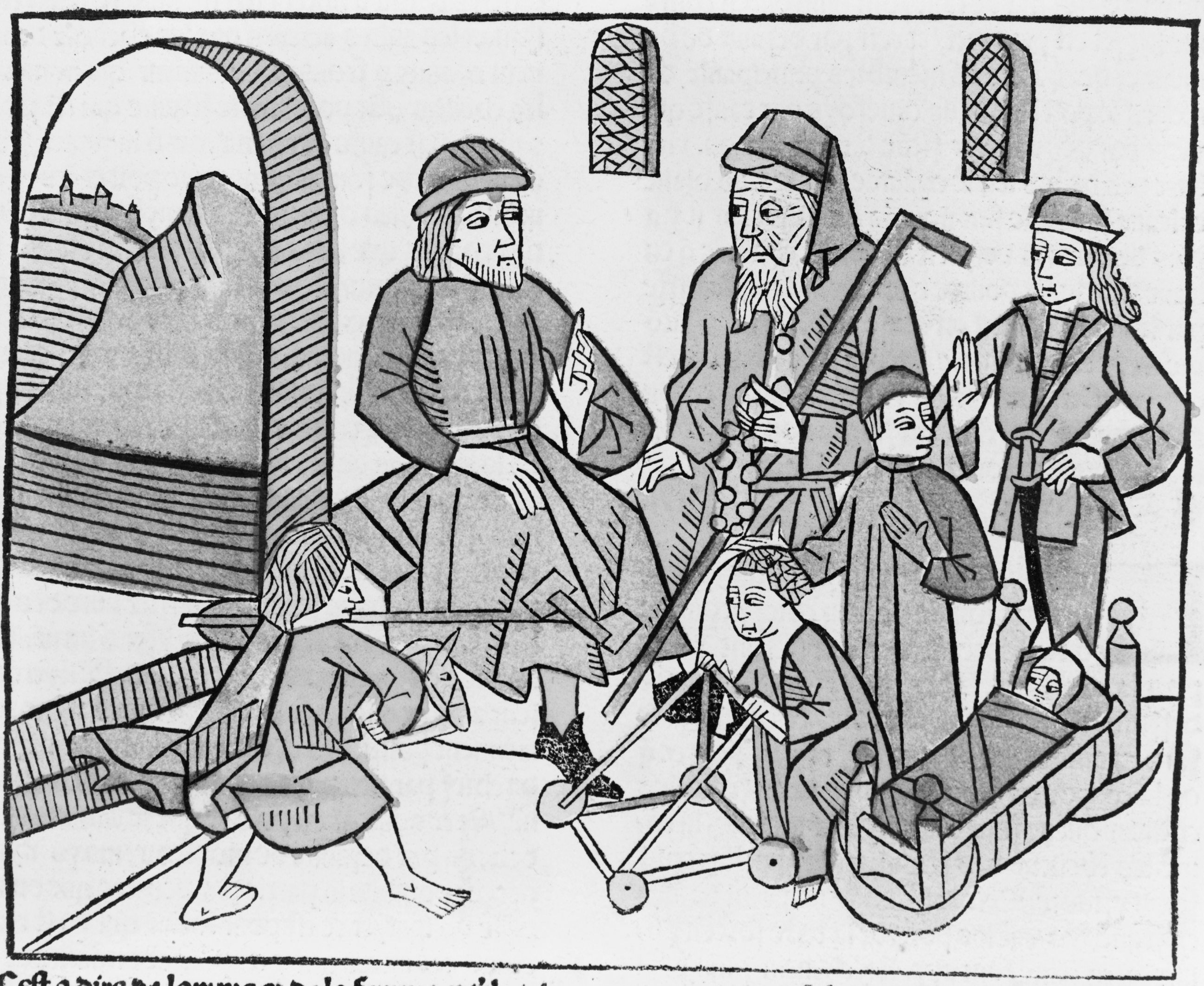Psychology in the Middle Ages
Part VI - The Late Middle Ages
Part VI - The Late Middle Ages
Towards the end of the Middle Ages, withthe revival in learning underway, the study psychology of individuals began to replace the collective psychology of earlier periods. Hospitals dedicated to the treatment of mental illness became more common, as psychology and psychiatry began to take forms that are more recognisable to modern practitioners.
This article is a part of the guide:
Browse Full Outline
- 1History of the Scientific Method
- 2Who Invented the Scientific Method?
- 3Before the Greeks
- 4Mesopotamia
- 5Greek Science
- 6Building Roman Roads
- 7Islamic Science
- 8Middle-Ages Science
Psychology in the Middle Ages (Part V) - Early Reniassance and Aquinas

Gilbertus Anglicus and Bartholomew
 The Renaissance also saw information popularized to the masses and leaving the centers of learning, albeit most knowledge was available only to the affluent, but it was no longer the name of academics separated from society. Gilbertus Anglicus (1180-1250), in his Compendium medicinae added new mental disorders, notably auditory and visual hallucinations, irrational phobias. He also suggested treatments for these disorders, concentrating on building self-confidence and developing a therapeutic relationship.
The Renaissance also saw information popularized to the masses and leaving the centers of learning, albeit most knowledge was available only to the affluent, but it was no longer the name of academics separated from society. Gilbertus Anglicus (1180-1250), in his Compendium medicinae added new mental disorders, notably auditory and visual hallucinations, irrational phobias. He also suggested treatments for these disorders, concentrating on building self-confidence and developing a therapeutic relationship.
Bartholomew (1203-1272), in De proprietatibus rerum described that sadness, business pressures, dread, danger, foreboding, and too much studying could lead to insanity, possibly one of the first incidences of recognizing stress as a contributor to mental illness. Bernard de Gordon (c. 1260-1318), in Montpellier, subdivided melancholia into stages, a progression from hidden melancholia to outward and then complete melancholia, leading to withdrawal and social isolation and dysfunction.
Under English law of the early 12th century, some protection and provision for care was given to the insane, whether congenital or as a result of the onset of mental illness, and some credence was given to classical beliefs concerning mental illness, so it was not all possession and driving out demons. The law, based upon Roman law, regarded the insane as often incapable of making decisions and also exempting them from punishment, because insanity was seen as a punishment in itself.
Hospitals and Reinventing the Individual
A few hospitals with the mission of treating the mentally ill sprang up in the twelfth and thirteenth century, possibly as a result of the more enlightened views imported from the Islamic world and Byzantium. Metz, France, in 1100, Milan, Italy, 1111, with Sweden, London, and Florence and Northern Germany also seeing institutions, although it was likely that these relied upon isolation, especially of violent inmates.
In the 15th Century, Spain, under the influence of the Islamic moors, set up a number of mental hospitals, and care was likely provided by religious orders. St Bartholomew’s had a number of inmates, and is one of the few hospitals that allows us to see the nature of some of the illnesses. Records report hallucinations, breakdowns, epilepsy, insomnia, and a number of other cases that would be familiar to modern psychiatrists. They were allegedly cured by the miraculous intervention of St. Bartholomew, although little else is said about the exact nature of the treatments.
 Some of the great and the good also reported mental conditions, although it is likely that their treatment was better than the common person. Charles VI of France suffered bouts of insanity, 13th Century Italian artist, Opicinus de Canistris suffered melancholic bouts as, it is believed, did Chaucer, his Book of the Duchess allegedly autobiographical recounting of his own melancholia. The English poet Thomas Hoccleve talked of his melancholia in his poem, The Complaint: it seems that artists and poets were just as prone to depression as they are now.
Some of the great and the good also reported mental conditions, although it is likely that their treatment was better than the common person. Charles VI of France suffered bouts of insanity, 13th Century Italian artist, Opicinus de Canistris suffered melancholic bouts as, it is believed, did Chaucer, his Book of the Duchess allegedly autobiographical recounting of his own melancholia. The English poet Thomas Hoccleve talked of his melancholia in his poem, The Complaint: it seems that artists and poets were just as prone to depression as they are now.
The Late Middle Ages set the groundwork for the Renaissance, as Europe began to climb out of superstition and religious dominance. Social mobility once again became easier, albeit difficult, with the feudalism apparent for centuries eroding in the face of a new, mercantile class with the wealth to challenge hereditary nobility.
Check out our quiz-page with tests about:
Martyn Shuttleworth (). Psychology in the Middle Ages. Retrieved Dec 19, 2025 from Explorable.com: https://explorable.com/middle-age-psychology-mental-hospitals
You Are Allowed To Copy The Text
The text in this article is licensed under the Creative Commons-License Attribution 4.0 International (CC BY 4.0).
This means you're free to copy, share and adapt any parts (or all) of the text in the article, as long as you give appropriate credit and provide a link/reference to this page.
That is it. You don't need our permission to copy the article; just include a link/reference back to this page. You can use it freely (with some kind of link), and we're also okay with people reprinting in publications like books, blogs, newsletters, course-material, papers, wikipedia and presentations (with clear attribution).
This article is a part of the guide:
Browse Full Outline
- 1History of the Scientific Method
- 2Who Invented the Scientific Method?
- 3Before the Greeks
- 4Mesopotamia
- 5Greek Science
- 6Building Roman Roads
- 7Islamic Science
- 8Middle-Ages Science
Footer bottom


